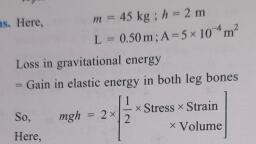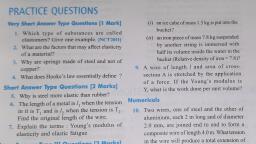Question 1 :
The smallest resistance that can be obtained by the combination of  $n$ resistors, each of resistance  $R$ is:
Question 2 :
Calculate the energy consumed by $2\ kW$ heater used for $1\ hr$ every day in a period of $30\ \text{days}$.
Question 3 :
When a metallic conductor is heated then the atoms in the metal vibrate with ?<br/>
Question 4 :
In our houses all electrical devices operate on 220 V. It implies that
Question 5 :
From below which are the applications of heating effect of electric current?<br>
Question 6 :
Why is electric power transmitted over long distances at high voltage?<br>
Question 7 :
A typical thermistor can easily measure a change in temperature of the order of
Question 8 :
Which of the following will produce maximum wastage of electricity ?
Question 9 :
How much units of energy is consumed in operating ten 50 watt bulbs for 10 hours per day in a month (30 days)
Question 10 :
The current in a wire is doubled keeping temperature constant. Which of the following statements is/are wrong?
Question 11 :
Identify the changes in a circuit on adding a light bulb in parallel to the actual resistance of the circuit. It will:<br/>
Question 13 :
Shivam went for buying a CFL from D-mart, what safety mark he should look for?
Question 14 :
The cells are joined in parallel to get the maximum current when
Question 15 :
What is the total resistance when four resistors of $20, 40, 60$, and $80$ respectively are connected in parallel (in ohm)?
Question 16 :
When the electric resistance are connected in parallel, which one of the following quantities is not affected ?
Question 17 :
The smallest resistance that can be obtained by combining 10 resistors each of resistance $10 \Omega$is
Question 18 :
A thermocouple is made from copper and iron. at the hot junction, the current
Question 19 :
The thermo-emf of a copper-constant couple is $40\muV$ per degree. The smallest temperature difference that can be detected with this couple and galvanometer of $100\Omega$ resistance capableof measuring the minimum current of $1\mu A$ is
Question 21 :
Which of the following quantities do not change when a resistor connected to a battery is heated due to the current?<br>
Question 22 :
As the temperature of a conductor increases, its resistivity and conductivity change. The ratio of resistivity to conductivity
Question 23 :
A piece of copper and another of germanium are cooled from room temperature to 80K. The resistance of
Question 24 :
Why are bulbs filled with chemically inactive Nitrogen or Argon gas?<br>
Question 25 :
A 24V potential difference is applied across a parallel combination of four 6 ohm resistor. The current in each resistor is:<br/>











































